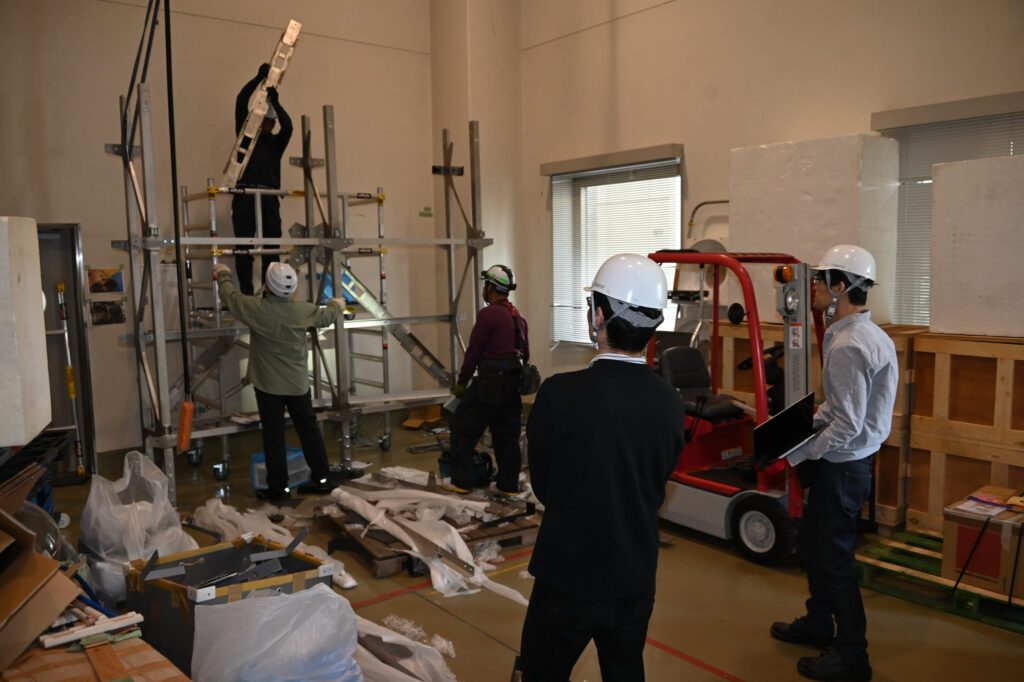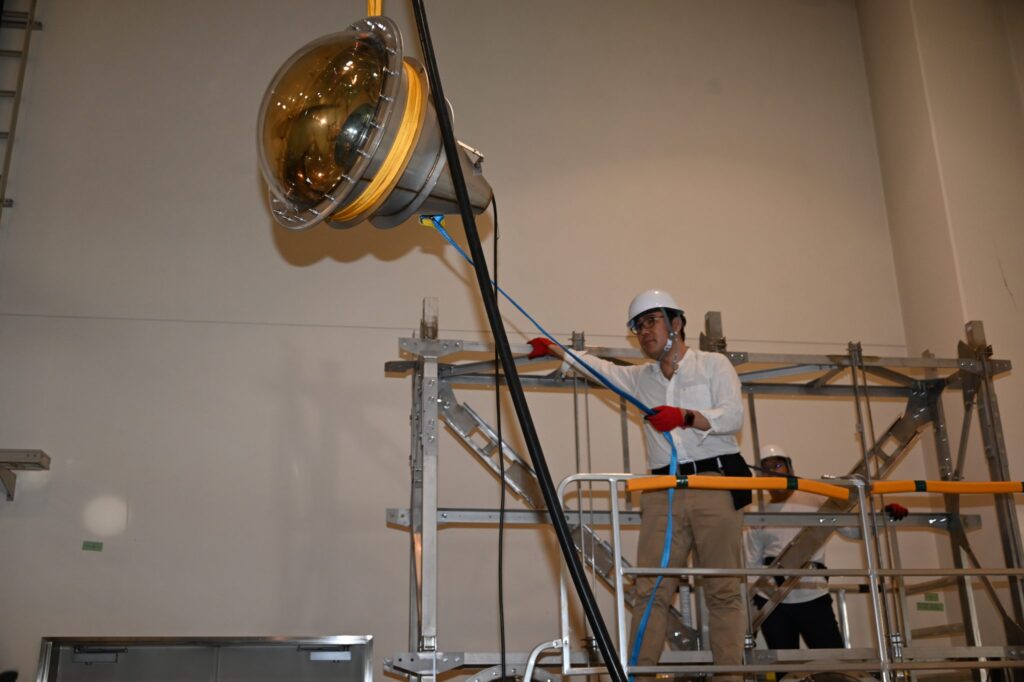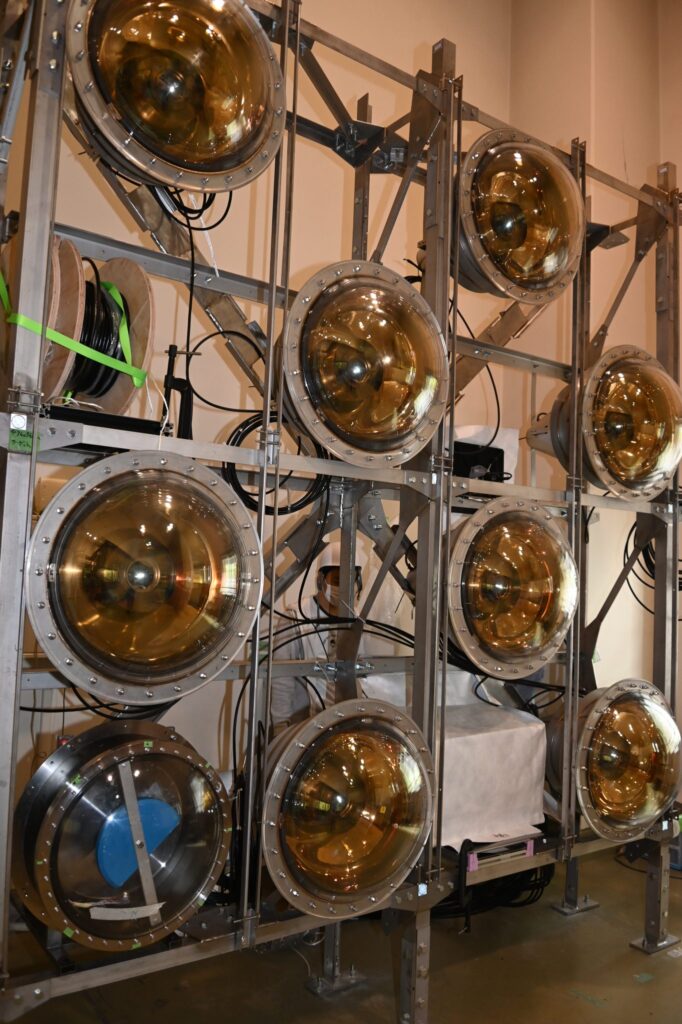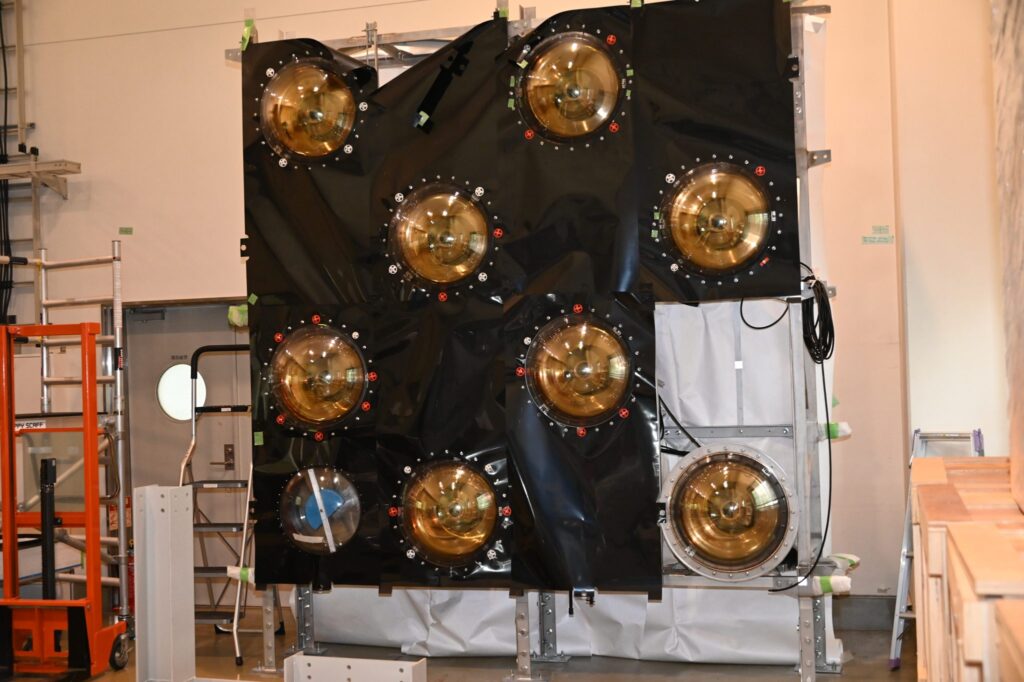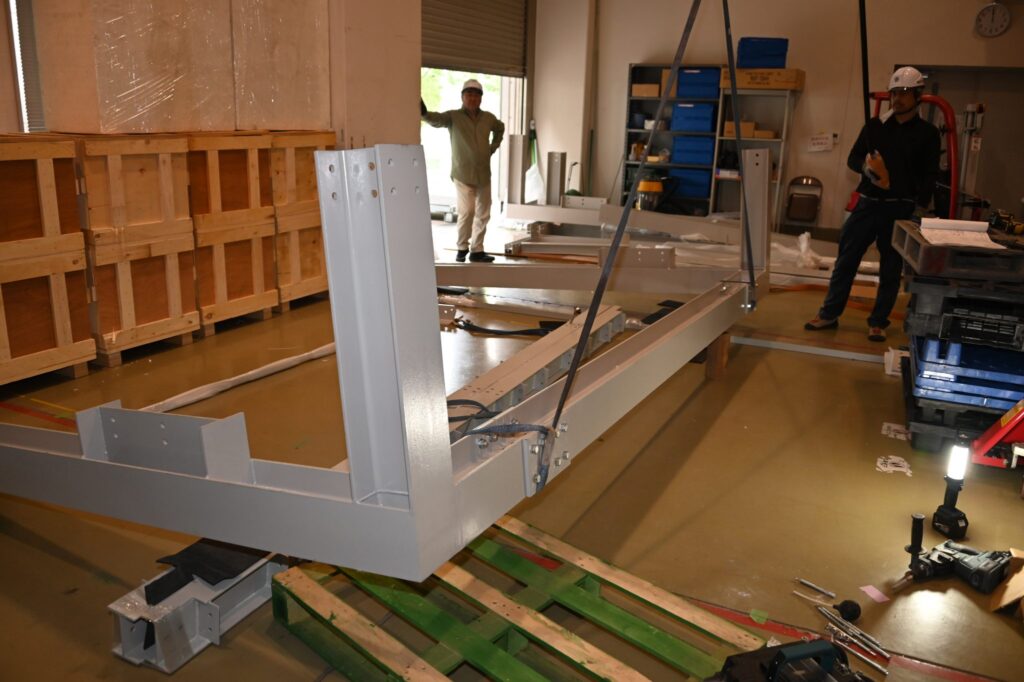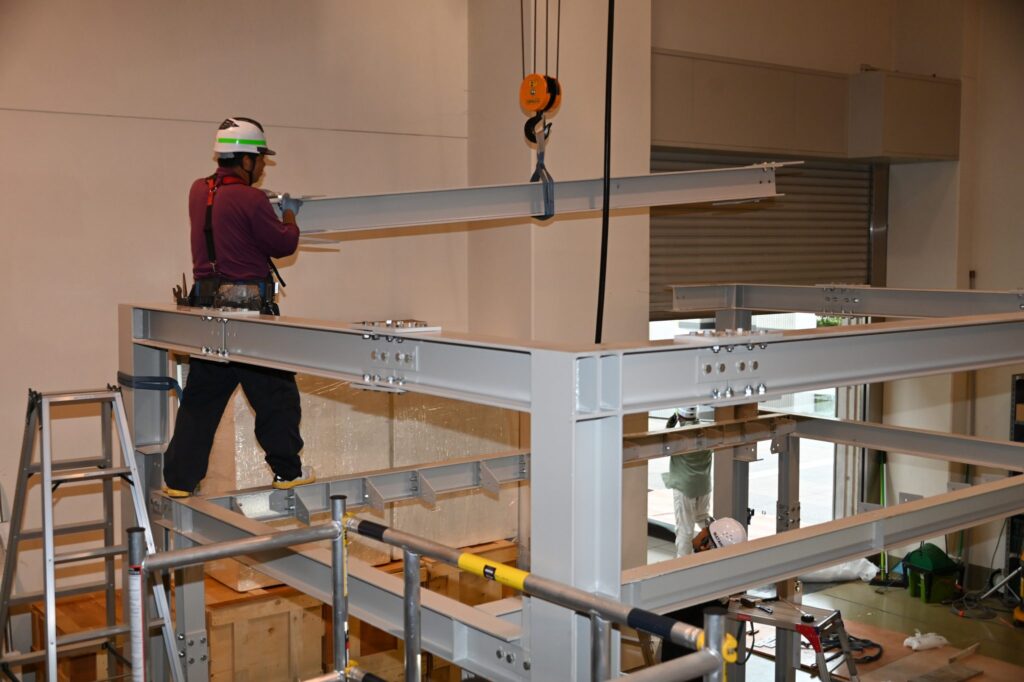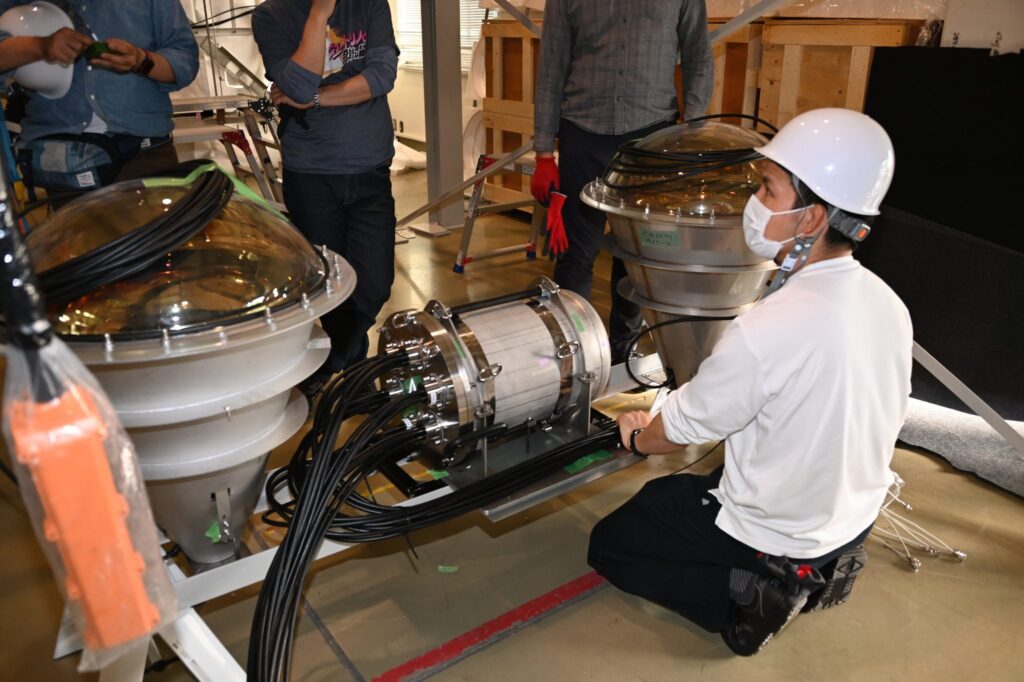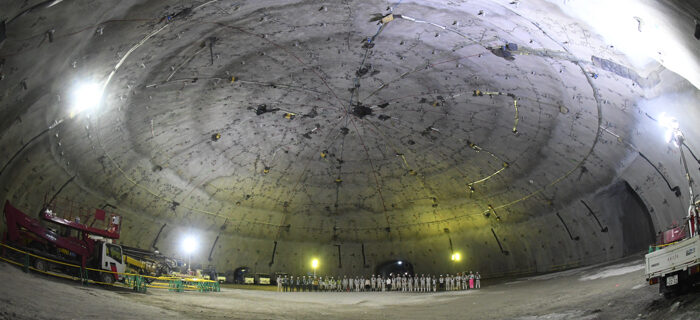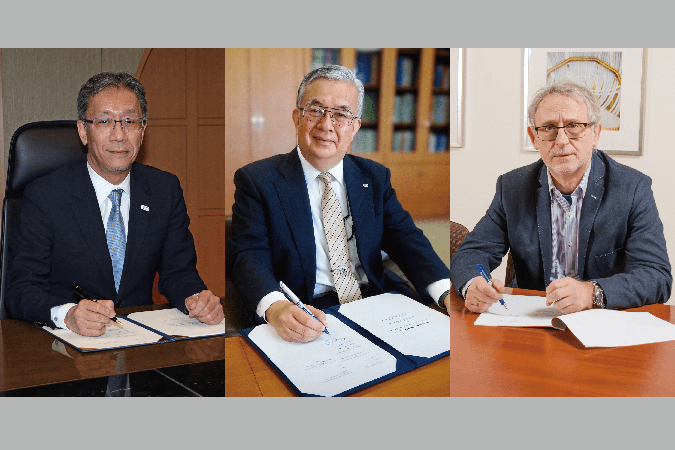

Hyper-Kamiokande (Hyper-K) is the next-generation water Cherenkov detector after Super-Kamiokande. Installation test of detector components to mockup frames of Hyper-K support structure has gained momentum at ICRR HQ in Kashiwa campus of the University of Tokyo.
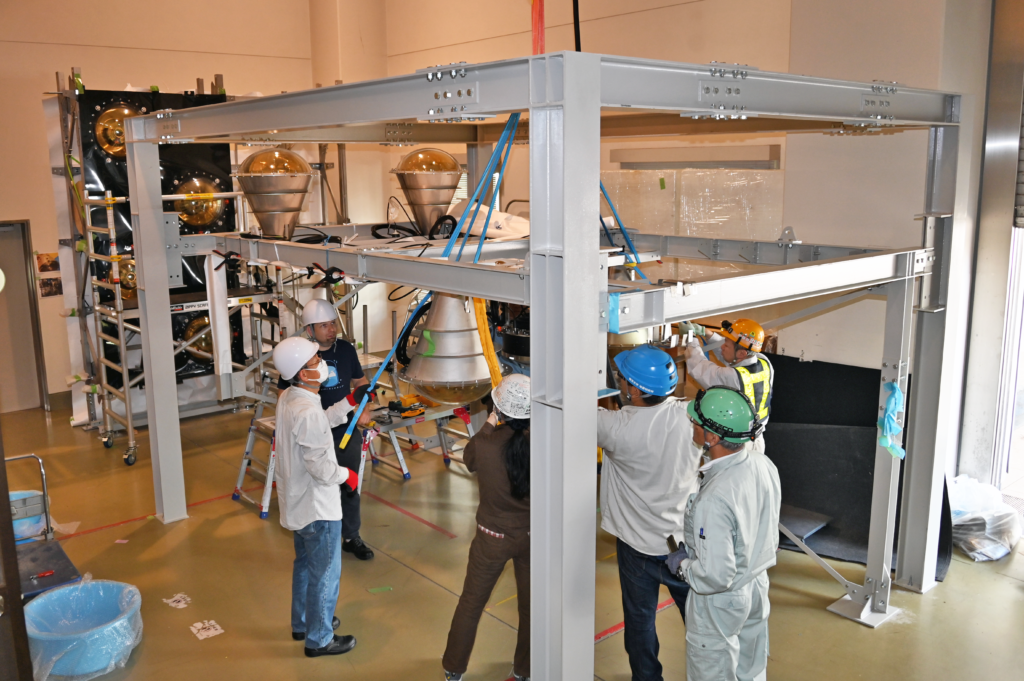
The Hyper-K detector is designed to have a fiducial mass eight times larger than that of Super-Kamiokande and is equipped with newly developed high-sensitivity photosensors. The aim of the project is to discover the proton decay event predicted by the Grand Unified Theory, explore the history of the universe’s evolution by measuring CP violation in neutrino flavor mixing (the asymmetry between neutrinos and antineutrinos), observe neutrinos from supernova explosions, and so on. The construction budget was approved by the Japanese Diet in February 2020, marking the official start of the project. Construction has progressed significantly, with the main cavern excavation starting in November 2022 and the successful completion of the dome section in October 2023.
Twenty-two countries are participating in this Hyper-K project. Several detector components, such as multi-PMTs and 50-cm diameter PMT covers, are to be contributed by foreign countries. The installation test of the detector components into mockup frame aims to evaluate the validity of the structural design, the installation procedure of the detector components, and the efficiency and safety of installation process. We have studied the mockup test of Japanese 50-cm diameter PMTs using a previous mockup frame which was constructed in January 2020.
From April 2024, mockup frame of the final design for the barrel section (stainless steel : 280 x 380 cm) has been renewed, and hybrid type for the top and bottom sections (steel : 420 x 210 x 210 cm) has been newly constructed. Several collaborators (researchers and technical staffs) gathered from inside and outside Japan to conduct installation tests of the detector components, such as 50-cm diameter PMTs, multi-PMTs, outer detector PMTs and electronics module containers, using the ceiling crane and hand lifters. In future, the installation procedure will be improved with the contractors using these mockup frames toward Hyper-K construction in FY2026.
Associate Prof. Kimihiro Okumura, Director of Research Center for Cosmic Neutrinos (RCCN), who is responsible for the series of installation test, said, “This time, we are testing the installation for almost all the detector components, not only Japan-made 50-cm diameter PMTs, but also multi-PMTs, outer detector PMTs, electronics module containers, Tyvek sheets, and so on, which are produced in foreign countries. We have learned many things from the installation tests using the real detector components and the real structure frame. If we find any significant issues in the structure design and the detector components, we will need to modify it. We can proceed with the next construction phase once everything is confirmed.” Prof. Masato SHIOZAWA, co-spokesperson of Hyper-K project also commented, “I feel that the project is going into full swing. We will devote ourselves to preparing everything so that the researchers from around the world can gather at the Hyper-K site to install each detector component in the coming FY2026.”
